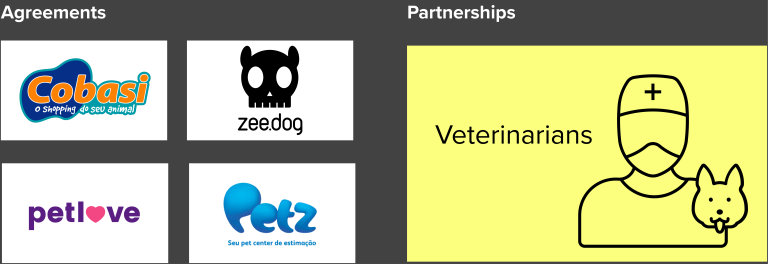Challenge
The challenge was proposed on the website UX Challenge.
And the chosen one was: “How do allow pet owners to interact with their pets when they are not home?”
Role
User Experience, UI design, research, strategy, wireframing, prototyping, usability testing
Background
Before the COVID pandemic, we already had problems with pets alone and were sad at home, because we needed to go out for work, hang out with other people, and travel. During the pandemic, a lot of tutors were able to adopt pets and take more time with them. Moreover, there is research done by Comissão de Animais de Companhia (COMAC): 30% of the pets were adopted during social isolation, tutors that adopted pets for the first time represents 23% of the interviewed and the cat’s average adoption was 37%, while dogs 22% during the pandemic period.
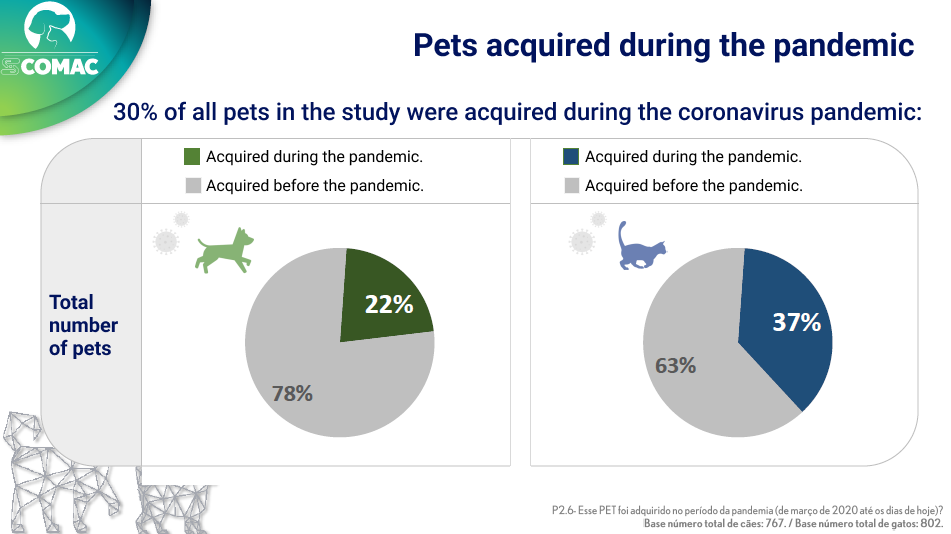
Source: COMAC
With this information, we can notice the preoccupation with the return to normality.
Other research performed by Petlove in partnership with Hill’s Pet Nutrition shows that 73% of the tutors interviewed fear in-office work and 25% is worried about the new routine far from the pet
Some companies adopt 100% remote jobs, but others want in-office or hybrid. With this, there is a possibility that the pets get used to staying by themselves, and in the case of the recently adopted, start getting used to the new routine.
But unfortunately, some cases can develop separation anxiety.
Benchmark
For this, research was done on competing products competing products related to general remote interactions with pets. Positive and negative aspects of each product were discovered in user reviews in the Apple Store, Google Play, Amazon and Facebook.
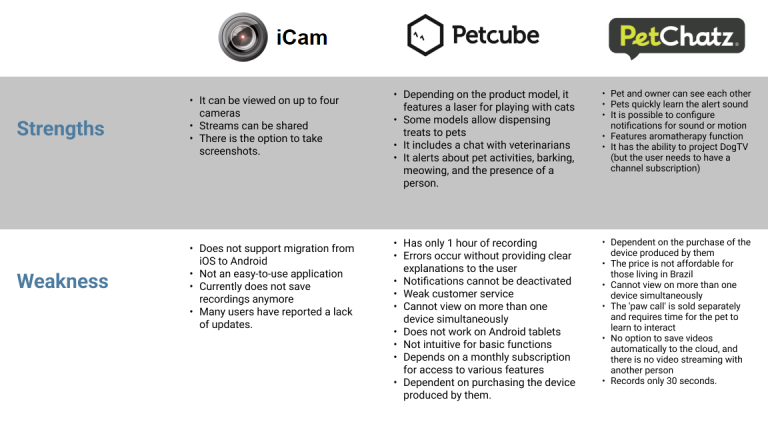
CSD Matrix
The CSD Matrix was made to organize certainties acquired with desk research, doubts and suppositions to be clarified.

Quantitative research
The research was disseminated in Facebook groups and with friends’ help, to create personas, and also to get ideas of technologies that people use the most, how many pets they have, the hours a day when pets were left alone before the pandemic and currently, among other questions that arose during the research.
The first question was to know which technologies people are familiarise and to discover which are the main platforms for the product. Smartphones and laptops are the most used.
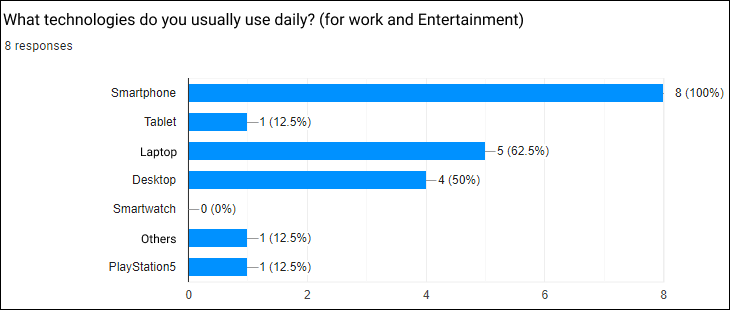
The second and third questions are about the quantity and which pets people have. The majority have cats and 50% have 2 pets.

The following questions were about how many times pets stay by themselves at home each day before and during the pandemic. Most people before the pandemic stayed between 5 and 8 hours, while currently the maximum is 2 hours in most cases.

It was also asked if people invest in any service for pets. Most do not invest.

And in the last questions, the majority answered that the company they work for, does not have the initiative to maintain proximity with the pets, nor that they usually take them together on trips.

Personas
The personas were created from the research that was done, including the quantitative research.

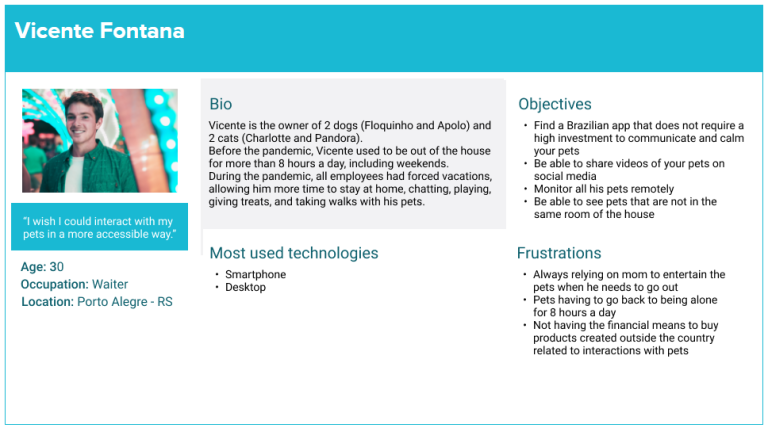
UX Strategy Canvas
To create more consistent results, I made a canvas (using Jim Kalbach’s template) to guide the project strategy.
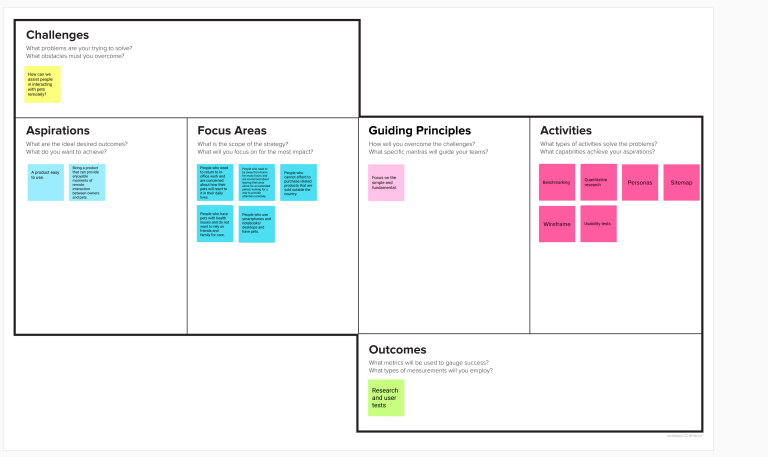
Sitemap
A sitemap was made to verify the basic flow and help in the creation of the prototype.

References
To have inspiration, it was searched for some apps. Mainly video calls apps
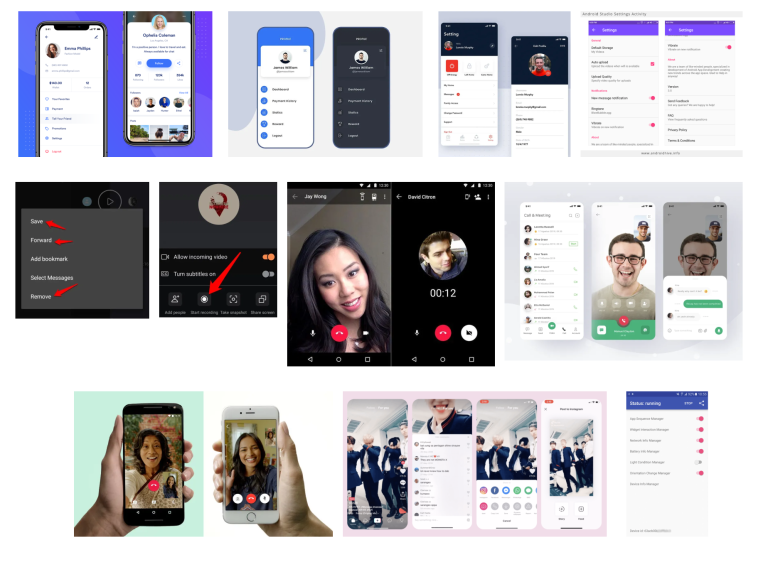
Sketches
The Crazy 8 technique was used to help with the initial ideas. The drawings helped me to think about the main features of the product.

Low fidelity prototype
Based on previous research and steps, it was possible to create a low-fidelity prototype and a wireflow.

User tests
Tests were carried out to check the usability of the product’s basic functions, flow and to identify possible failures. The tests were made with 5 people, through Discord and Google Hangouts. The script was as follows:

The test has validated the proposed experience flow and to find some problems and observations.
Interface feedback:
- Some icons need to include the name of what they do or mean
Improvements:
- Add a back button on the pet interaction screen, while leaving the call off button only in case a friend is present on the stream
- Think of a way so that the screenshot and record options don’t look hidden
- Improve contact by adding text in the settings
- Add the option to call to see the pet in the friends’ list or in the friends’ details
- The alert button could also provide some shortcut to change the sound and presence settings
- Add pet sound volume button
Style Guide
Colors
For the choice of colors, it was thought of the moments of interaction with the pets. The orange means vitality, joy and agitation and the blue represents calm, tranquility and security.

Typograph
The typography chosen was Roboto for its simplicity, legibility and for having a variety of weights.
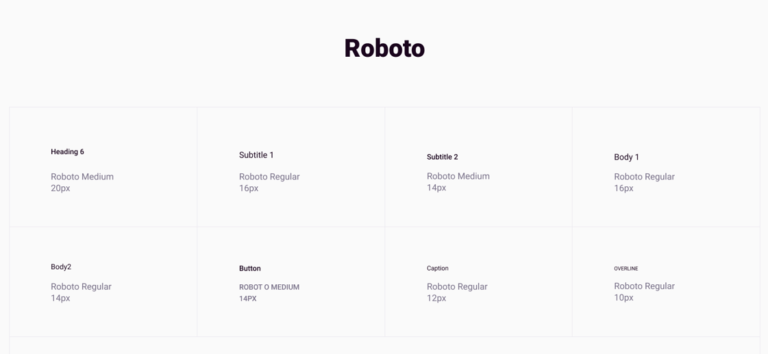
Buttons, forms and icons
They were created from a combination of chosen typographies and colors
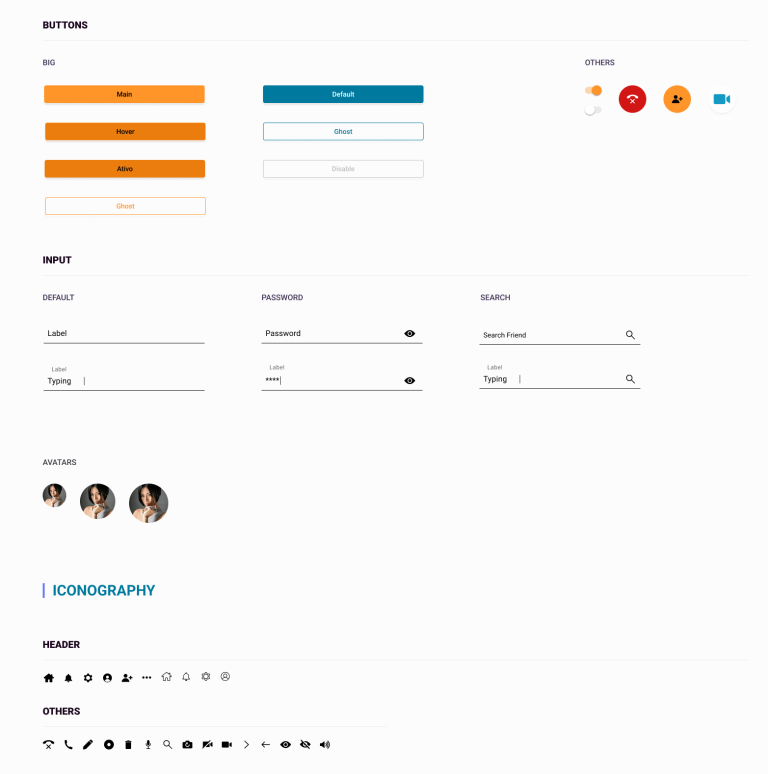
High fidelity prototype
After testing and defining the style guide, high-fidelity prototypes were made with the necessary adjustments applied.
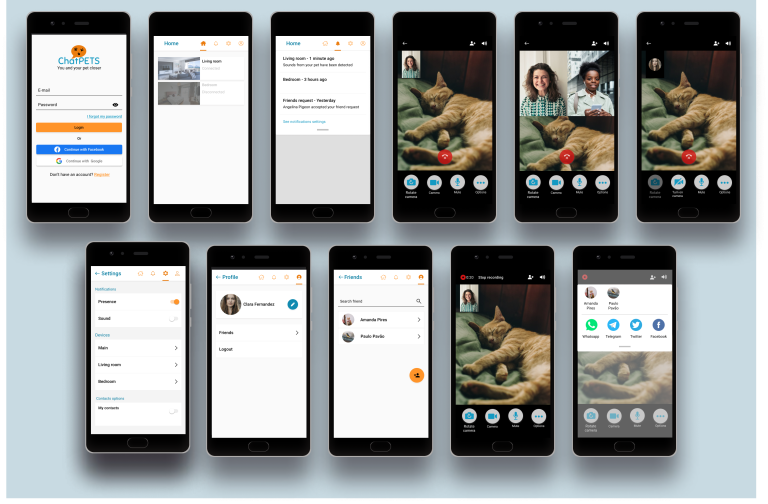
Future plans
There are future plans that have been thought out for the product. From features to partnerships, more research and more testing will be needed. Some of the future ideas that were thought of and some suggested in the tests:
- Commercial agreements with pet product stores such as Cobasi, Petz, Petlove and Zee Dog.
- Partnership with local veterinarians to be able to answer questions and be able to help with emergencies in nearby places.
